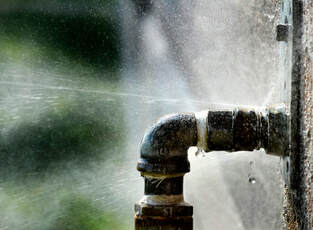Detect Sneaky Water Line Leaks: Six Clever Detection Tricks
Detect Sneaky Water Line Leaks: Six Clever Detection Tricks
Blog Article
Have you been hunting for critical info on Hacks to detect leaks?

Early discovery of leaking water lines can alleviate a prospective catastrophe. Some tiny water leaks might not be noticeable.
1. Analyze the Water Meter
Every house has a water meter. Examining it is a surefire manner in which aids you find leakages. For beginners, switch off all the water sources. Make sure no one will purge, utilize the tap, shower, run the cleaning maker or dish washer. From there, most likely to the meter and watch if it will change. Because no one is using it, there should be no movements. That shows a fast-moving leakage if it moves. If you detect no adjustments, wait a hr or two and examine back once more. This indicates you may have a slow-moving leakage that might even be below ground.
2. Check Water Consumption
Evaluate your water expenses and track your water usage. As the one paying it, you need to discover if there are any inconsistencies. If you find sudden changes, regardless of your intake coinciding, it indicates that you have leakages in your plumbing system. Keep in mind, your water bill ought to fall under the very same range on a monthly basis. An abrupt spike in your bill suggests a fast-moving leakage.
A consistent rise every month, also with the same practices, reveals you have a slow-moving leakage that's also gradually rising. Call a plumber to completely inspect your residential or commercial property, particularly if you really feel a warm area on your floor with piping underneath.
3. Do a Food Coloring Examination
When it comes to water consumption, 30% comes from toilets. If the shade in some way infiltrates your dish during that time without flushing, there's a leak in between the tank and bowl.
4. Asses Outside Lines
Do not fail to remember to inspect your outdoor water lines also. Needs to water leak out of the connection, you have a loosened rubber gasket. One small leak can throw away bunches of water and also increase your water expense.
5. Examine and Assess the Circumstance
Homeowners need to make it a routine to examine under the sink counters as well as even inside cabinets for any kind of bad odor or mold growth. These 2 warnings indicate a leakage so punctual interest is required. Doing routine inspections, even bi-annually, can conserve you from a significant trouble.
Check for stainings and also deteriorating as most home appliances and pipelines have a life span. If you think leaking water lines in your plumbing system, do not wait for it to rise.
Early discovery of dripping water lines can alleviate a possible catastrophe. Some tiny water leakages might not be visible. Checking it is a guaranteed means that helps you uncover leakages. One tiny leak can lose tons of water and also increase your water expense.
If you suspect dripping water lines in your plumbing system, don't wait for it to rise.
Tips for Detecting Hidden Plumbing Leaks
Check for Signs of Water Damage
We recommend that you check the following places for evidence of water damage:
Near where you store your water heater
Around your sump pump
In areas where pipes are visible
Underneath cabinetry or a vanity beneath a sink
Where your outside hose bib isIf water damage is present, you may also notice mold and/or mildew or smell a foul or musky odor. You might also be able to hear the sound of water running where it shouldn’t be.
Perform a Water Meter Test
One of the easiest ways to determine whether you have a hidden leak on your property is to test your water meter. Turn off all appliances in that use water and make sure you don’t have any faucets running. Locate your water meter and record the reading on it. Continue to leave everything off for a minimum of two hours and then go back and see the meter reading. If it’s a noticeable difference, chances are you have a hidden plumbing leak.
Monitor Your Outside Usage
As the seasons change, you might use more water to keep your yard lush and green and your flowers blooming. However, it’s important to routinely ensure that your sprinkler or irrigation system is working properly and that any outside faucets are completely off. This way you’re not wasting any water.
Do the Toilet Food Coloring Test
Are you kept up at night because your toilet continues to run? If you’ve noticed your toilet randomly refills, especially when it’s not in use, it could mean you have a defective flapper tank and water will leak into the bowl. Fortunately, there’s an easy (and kind of fun!) way to test whether you’re dealing with this issue. Grab some food coloring and add a few drops into your toilet’s tank. Wait 15 minutes and then check to see whether the water in the bowl is colored. If it is, you have a leak within your toilet and the internal assembly will need to be repaired or replaced.
https://www.carterservices.com/blog/2020/february/tips-for-detecting-hidden-plumbing-leaks/

I have been very interested by Locating water leaks and I'm hoping you enjoyed reading my entry. Sharing is caring. Helping people is fun. Thanks for going through it.
For top results, contact! Report this page